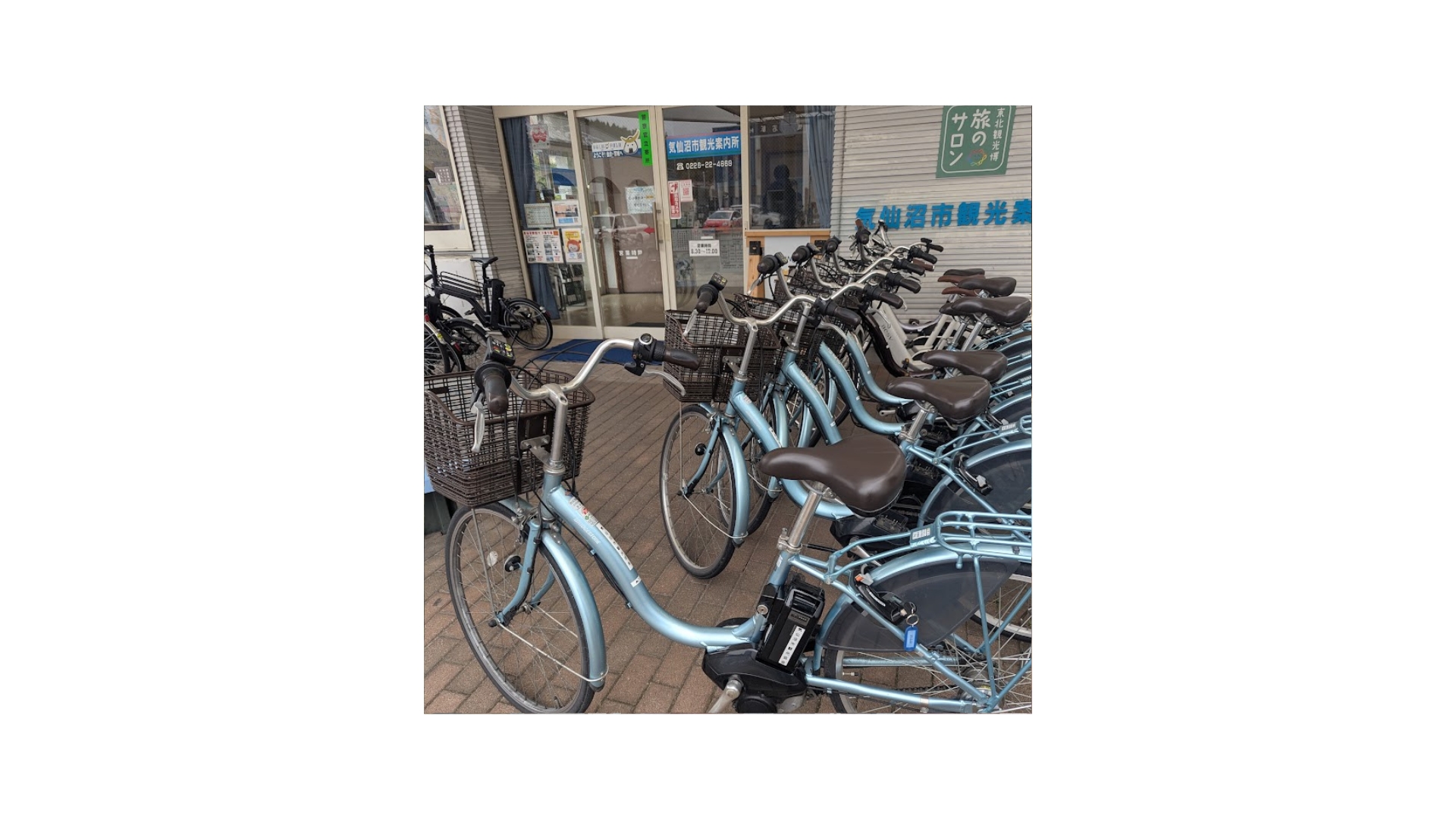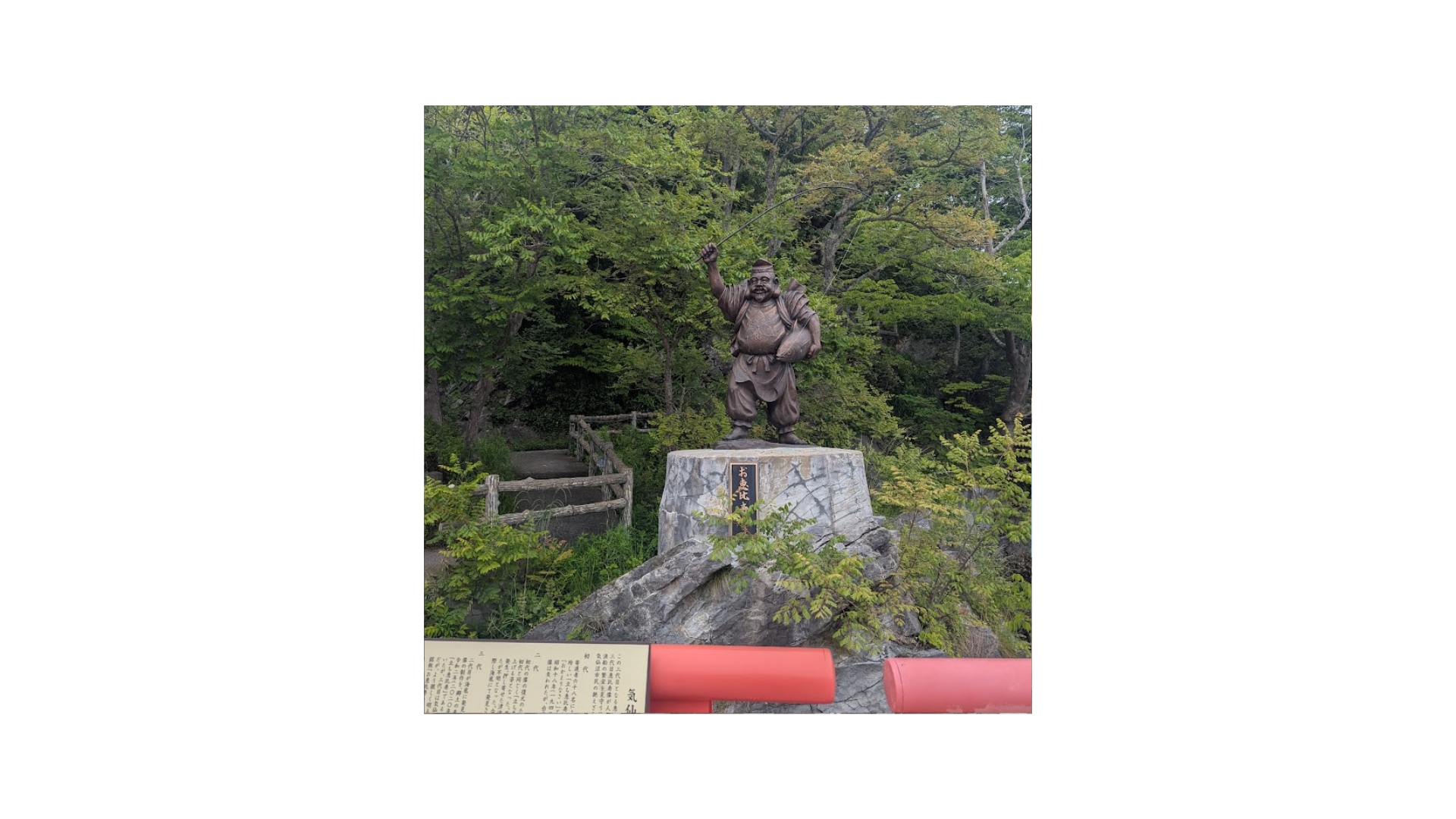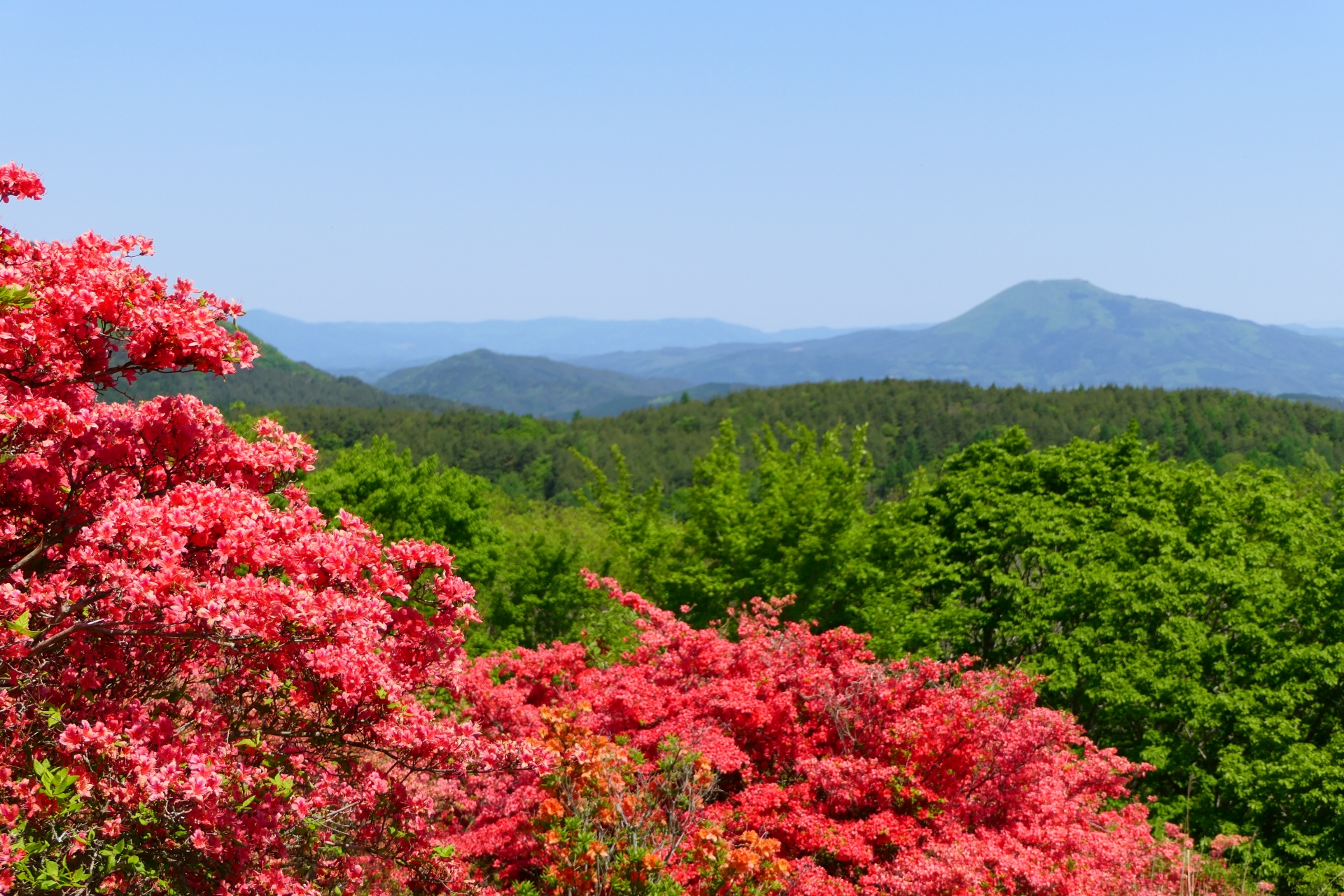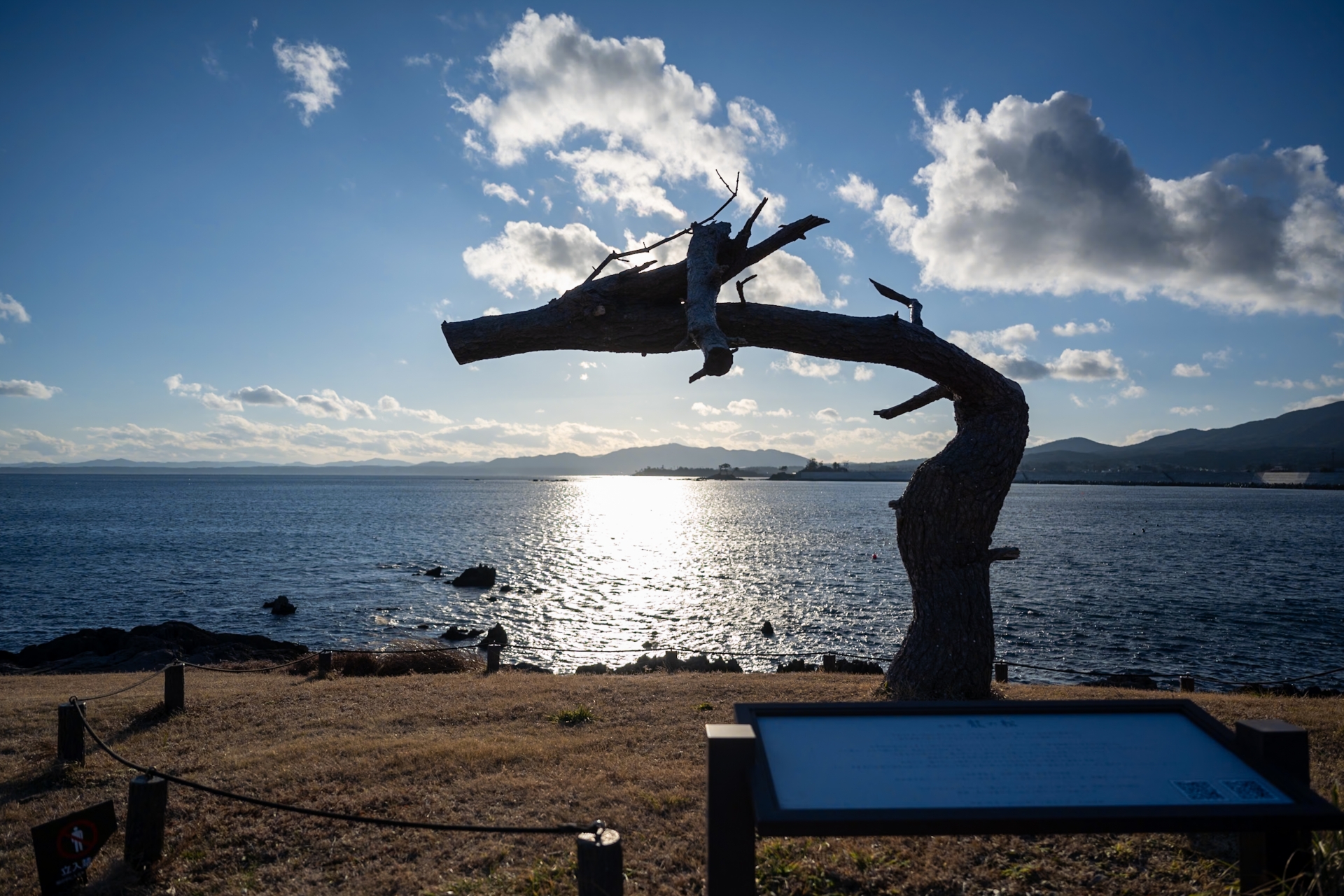Facing the Sanriku Coast—one of the world’s richest fishing grounds—Kesennuma is a vibrant port town in Miyagi Prefecture known for its dramatic rias coastline, world-class seafood, and remarkable recovery from the Great East Japan Earthquake.
Kesennuma Station – Your Gateway to Coastal Charm 気仙沼駅

Located in the northernmost part of Miyagi Prefecture, Kesennuma is a coastal city renowned for its rich seafood, thanks to its proximity to the Sanriku Coast—one of the world’s top three fishing grounds. While it’s famous for gourmet delights from the sea, Kesennuma also offers a variety of relaxing sightseeing spots that are perfect for leisurely walks.

Getting to Kesennuma Station is straightforward:
from Tokyo, take the Tohoku Shinkansen to Ichinoseki Station, then transfer to the Ofunato Line;
from Sendai, connect via several lines including the Tohoku Main Line and the BRT to reach Kesennuma Station.
Once there, the city’s central Inner Bay Area is easily walkable, and taxis are readily available when needed. For a more active adventure, rental bicycles are available at the tourist information center near the station.

Kesennuma Port – A Vital Gateway to the Sea and Seafood Culture 気仙沼港

Kesennuma Port is the maritime heart of the city and one of Japan’s designated “Category-3 Special Fishing Ports,” a distinction held by only 13 ports nationwide. Home to the Kesennuma City Fish Market, this bustling hub is where freshly caught seafood from the rich Sanriku fishing grounds—one of the world’s three premier fishing areas—is brought in daily.
Not only does the port support coastal fisheries, but it also serves as a major base for deep-sea fishing vessels. Kesennuma boasts some of Japan’s highest catches of bonito (katsuo), Pacific saury (sanma), swordfish (mekajiki), and even shark, making it a cornerstone of the country’s fishing industry.
Visitors can experience the vibrant atmosphere of the market during the day, while at night, the port transforms with elegant lighting that casts a magical glow over the harbor. Whether you’re a seafood lover, a photography enthusiast, or simply curious about Japan’s maritime heritage, Kesennuma Port offers a dynamic and authentic glimpse into the city’s ocean-driven way of life.

Kesennuma City Memorial Park for Reconstruction – A Place of Remembrance and Hope 気仙沼市 復興祈念公園

Opened on March 11, 2021, Kesennuma City Memorial Park for Reconstruction is a solemn and meaningful place dedicated to remembering the victims of the Great East Japan Earthquake and honoring the ongoing journey of recovery.
Located at the base of Mt. Anba in the Jinzan area, the park overlooks the Shishiori and Inner Bay districts—areas that were devastated by the tsunami and fires. From this vantage point, visitors can reflect on the scale of the disaster and witness the progress of reconstruction.

The park’s symbolic centerpiece, the “Sail of Prayer,” was created with the heartfelt support of both local citizens and people around the world. Memorial plaques inscribed with the names of those lost serve as a permanent tribute. Open to all, the park invites visitors to pause, remember, and share in the spirit of resilience that continues to define Kesennuma.
Shinmeizaki, Ukimi-do Pavilion & Standing Ebisu Statue, and Ryujin Shrine 神明崎/浮見堂・恵比寿像/龍神社
Shinmeizaki is a picturesque cape offering sweeping views of Kesennuma Bay and the Inner Bay area. Known as a local nature haven called the “Hyakujū-en” or Garden of a Hundred Trees, it is home to diverse plant life, including the northernmost naturally growing Chinese goldenrain tree—a designated natural monument.

This scenic area is rich in cultural heritage, featuring monuments to renowned poets like Matsuo Basho and local tanka poet Takeo Kumagai, as well as shrines such as Isuzu Shrine and the Igari Shrine, which honors Shinbei Igari, a pioneer of seaweed cultivation.
One of the cape’s most beloved features is the Ukimi-do Pavilion, linked by a bright red promenade stretching over the water. This walkway offers beautiful views of moored fishing boats and becomes even more magical at night thanks to atmospheric lighting.

Standing proudly nearby is the third-generation Standing Ebisu Statue, a rare depiction of the deity Ebisu upright—symbolizing prosperity and safe returns. While most Ebisu statues are seated, this one takes a bold step forward, holding a bonito fish, a nod to Kesennuma’s record-breaking catch volumes. The statue is regarded as a symbol of good fortune and recovery, having been rebuilt after previous versions were lost, including during the 2011 tsunami.

Adjacent to Isuzu Shrine is a charming café called Fuku-Fuku, created from the shrine’s renovated office. It serves locally inspired treats like Ebisu dorayaki and offerings centered around rice, salt, and sake—essentials in Shinto culture and Kesennuma’s culinary traditions.


Within the shrine grounds, you’ll also find Ryujin Shrine, dedicated to the sea deity Ōwatatsumi-no-Ōkami, and the Igari Shrine, both reflecting the city’s deep-rooted connection to the ocean and its history of aquaculture and salt production.

Whether you come for the views, the history, or a peaceful stroll by the sea, Shinmeizaki is a spot where nature, spirituality, and community come together beautifully.
Mt. Tokusenjo – Japan’s Largest Azalea Wonderland 徳仙丈山

Every year from mid to late May, Mt. Tokusenjo in Kesennuma transforms into a breathtaking sea of red and orange as approximately 500,000 wild azaleas burst into full bloom. Rising 711 meters above sea level on the border of Kesennuma City and former Motoyoshi Town, this mountain is celebrated as one of Japan’s largest azalea-viewing spots. Spanning an impressive 50 hectares—about the size of 10 Tokyo Domes—the slopes are carpeted with vivid Yamatsutsuji and Renge Tsutsuji varieties, creating an unforgettable floral spectacle.
From the Kesennuma-side trailhead, visitors can reach the summit in about 40 minutes on foot, but even a short stroll offers stunning views of blooming azaleas. A popular destination during the flowering season, Mt. Tokusenjo welcomes both seasoned hikers and casual visitors alike. Thanks to gentle slopes and mid-level blooming zones, even those without much hiking experience can enjoy a relaxed outing surrounded by nature.
The first viewing platform is just a 15-minute walk from the entrance, offering panoramic views of crimson blossoms. From the summit, visitors are rewarded with a striking contrast between the vibrant azalea-covered mountainside and the deep blue Pacific Ocean beyond. Along the trails, you may also encounter rare wildflowers such as gentians, violets, and fairy lilies. Serene mountain streams and fresh mountain air add to the rejuvenating experience, making Mt. Tokusenjo a true springtime paradise.
Karakuwa Peninsula – Rugged Coastlines and Authentic Coastal Life 唐桑半島

Located at the northeastern tip of Miyagi Prefecture, the Karakuwa Peninsula is a dramatic stretch of coastline known for its stunning natural scenery and rich maritime culture. Part of the Sanriku Fukko (Reconstruction) National Park and a designated marine park, this area boasts striking geographical features shaped by its rias coastline—deep, narrow inlets flanked by rugged cliffs. Highlights include the Marble Coast, where white stone cliffs contrast beautifully with deep blue seas and green forests; Ogama, a series of uniquely shaped rock formations; and the iconic Oreishi, a 16-meter-high, 3-meter-wide marble pillar that rises sharply from the shore.
Karakuwa is not only a visual gem but also a treasure trove of fresh seafood, including oysters, scallops, and wakame seaweed harvested from its pristine waters. For outdoor lovers, the peninsula offers two scenic trekking routes, including the Miyagi Olle Kesennuma–Karakuwa Course, which allows hikers to experience the diverse terrain—from dramatic coastal cliffs and crashing waves to tranquil farmland and traditional fishing villages. Along the way, visitors can enjoy panoramic ocean views, lush vegetation, and glimpses into the daily life of the local community.
This 10-kilometer stretch of coastal wilderness is also a favorite for anglers, offering ideal rock fishing spots for species like greenling (ainame), with squid caught in winter. Whether you’re trekking, fishing, or simply soaking in the coastal beauty, the Karakuwa Peninsula is a perfect destination for nature-based adventures and cultural immersion.
Cape Iwai – Where Nature, History, and Recovery Converge 岩井崎

Guarding the entrance to Kesennuma Bay, Cape Iwai is a dramatic coastal destination where the power of nature is on full display. Over countless years, seawater has carved intricate channels into the limestone cliffs, creating the famous Shiofuki-iwa (Blowhole Rock), where waves shoot up through natural crevices in bursts of seawater. The cape is also home to the “Dragon Pine”, a uniquely shaped pine tree that survived the 2011 tsunami and now stands as a symbol of resilience and recovery. The surrounding scenery, with its jagged rock formations and open sea views, offers a stunning landscape perfect for photography and quiet reflection.
Cape Iwai is not only scenic but also of great geological importance. It is one of Japan’s key fossil-rich sites from the Permian Period—approximately 250 million years ago. Declared a Natural Monument of Miyagi Prefecture, the Cape Iwai Limestone Fossils include corals, bivalves, ammonites, crinoids, and more. These well-preserved layers reveal vital clues about Earth’s ancient tropical-to-subtropical marine environments and the evolution of life.
Visitors can also enjoy interactive experiences at the Salt-Making Workshop, where you can learn about traditional sea salt production—an industry historically tied to this region. Though collecting fossils is prohibited, Cape Iwai offers a fascinating and respectful journey through deep time, natural beauty, and human perseverance.
Kodanohama Beach – A Peaceful Gem on Oshima Island 小田の浜海水浴場

Nestled on the eastern coast of Oshima Island—known as the “Green Pearl” of Kesennuma—Kodanohama Beach features a stunning crescent-shaped shoreline of soft white sand and calm, shallow waters. Once ranked second nationwide in Japan’s “Top 100 Best Swimming Beaches” by the Ministry of the Environment, Kodanohama Beach was widely praised for its beautiful scenery and exceptional water quality.
Though the beach was severely impacted by the 2011 Great East Japan Earthquake—with land subsidence and debris covering much of the coast—it has made a remarkable recovery. Thanks to the tireless efforts of local residents and volunteers from across Japan, the beach was restored, and in 2012, it proudly became the only beach in Miyagi Prefecture to reopen that summer.
Sheltered by the offshore Omemae Island, the waters here remain gentle, making it ideal for families and those looking to enjoy a tranquil seaside escape. During the summer season, Kodanohama Beach attracts visitors from within and beyond the region, offering a safe, scenic, and deeply meaningful coastal experience shaped by both nature’s beauty and the community’s resilience.
Rias Ark Museum of Art – Preserving Memory, Celebrating Culture リアス・アーク美術館
Perched on a hill overlooking Kesennuma Bay, the Rias Ark Museum of Art is a unique cultural facility that bridges art, history, and regional identity. The museum is especially known for its powerful permanent exhibition on the 2011 Great East Japan Earthquake and tsunami, titled “Records of the Great East Japan Earthquake and the History of Tsunami Disasters.” Through photographs, collected artifacts, and historical context, the exhibit not only documents the devastating impact on Kesennuma and Minamisanriku but also encourages reflection on how communities can rebuild and thrive in harmony with the sea.
Beyond its disaster heritage work, the museum houses a rotating selection of fine art pieces from artists connected to the Tohoku and Hokkaido regions. Visitors can enjoy a diverse range of works including paintings, sculptures, crafts, prints, and contemporary art—about 70 pieces in total—showcasing the creative spirit rooted in northern Japan.
Another highlight is the folk culture exhibit, “Ark Diary – Life in the Rias from Sea to Mountain.” Using hand-drawn illustrations, photographs, and artifacts, this section explores the cultural heritage of the Rias coastline with a focus on food. From the Jomon Period to modern times, it highlights how fishing, foraging, and seasonal living shaped the local lifestyle and customs.
Whether you’re interested in art, history, or local traditions, the Rias Ark Museum offers a meaningful and multidimensional experience—one that celebrates both resilience and creativity in the face of nature’s power.
Kesennuma Fish Market – A Seafood Lover’s Paradise 気仙沼お魚いちば
Located along Kesennuma’s Inner Bay, Kesennuma Fish Market is a vibrant gourmet and shopping destination where visitors can savor the best of the region’s ocean bounty. Fresh seafood landed at the nearby Kesennuma Fish Market is sold alongside a wide selection of locally made marine products, including rich shark fin soup concentrates, seafood delicacies, and uniquely crafted souvenirs. One standout is the award-winning “Aburi Sanma” (grilled Pacific saury)—made from Kesennuma’s famously abundant catch. This local specialty won the prestigious Emperor’s Cup at the 42nd National Agriculture, Forestry, and Fisheries Festival, making it a top pick among visitors.
In addition to its market stalls, the on-site restaurant serves up delectable dishes such as kaisendon (seafood rice bowls), prepared with seasonal, ultra-fresh ingredients straight from the sea. Whether you’re looking to enjoy a hearty local meal or pick up the perfect gift to take home, Kesennuma Fish Market offers a full taste of the city’s culinary pride—all in one convenient seaside location.
Marble Coast – Where White Stone Meets Deep Blue Sea 大理石海岸
Tucked into a quiet inlet on the northern edge of the Karakuwa Peninsula, near the Iwate Prefecture border, Marble Coast (Dairiseki Kaigan) is a hidden gem known for its serene beauty and striking contrasts. Along the shores of Hirota Bay, bands of natural marble stretch across the coastline, their distinctive white hue shining brilliantly against the deep sapphire waters of the Pacific. This stunning juxtaposition of colors creates a picture-perfect seascape that captivates photographers and nature lovers alike.
In earlier times, the area was known for quarrying high-quality marble—some of which was reportedly used in the construction of the famous Mitsukoshi Department Store in Tokyo’s Nihonbashi district. While marble is no longer extracted here, the coastline remains a breathtaking example of nature’s artistry, offering peaceful views and a quiet atmosphere far from the crowds.
Whether you’re visiting as part of a coastal trek along the Karakuwa Peninsula or simply seeking a tranquil place to reflect by the sea, Marble Coast is a visually striking and historically rich destination well worth the journey.
Ending
Whether you’re here for the fresh seafood, peaceful landscapes, or stories of resilience, Kesennuma promises a memorable experience by the sea. Take your time, explore its hidden treasures, and discover the heart of coastal Japan.



